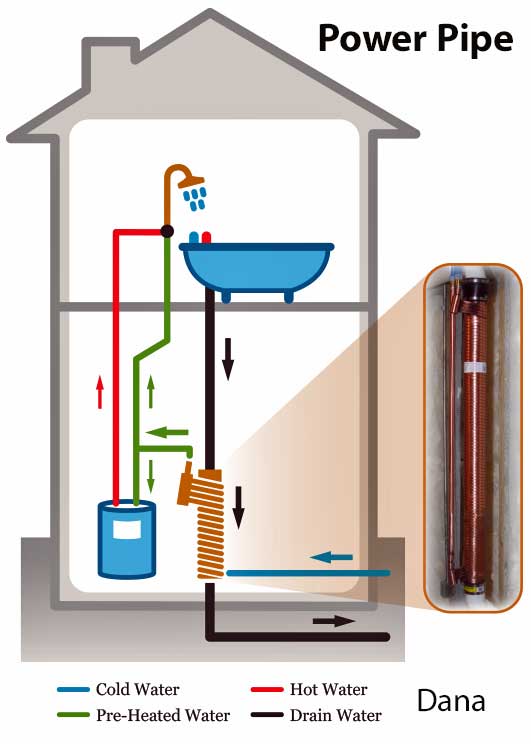An atmospheric drafted propane water heater has huge standby losses compared to an electric tank, due to convection through the center-flue heat exchager, the insulation clearances around the burner, and the (usually) much thinner insulation. The power used by the recirculation pump will add up too. A cheap 40-50 gallon electric (wired-up and functional) that takes it's input from the new propane water heater is a better bet.
The power used to cover the standby losses of the electric water heater could even be lower than that of the recirculation pump scheme, but the heavy lifting of heating the water will be done at the higher output rate of the propane burner, not relying (much) on the electric elements for anything but covering the standby losses.
With gusher showers and high priced energy such as propane or electricity it's usually well worth including a drainwater heater exchanger to feed both the cold input to the primary water heater and the cold side of the shower with partially heated water. For high flow showers it's important to use a heat exchanger with the lowest possible pressure drop. The
EcoDrain V1000 series is the new industry leader on that, but Renewability's multi-coiled
PowerPipe series isn't bad even in a 4" x 60". (Others will sometimes have a problem delivering the 6, 8, 10 gpm through the heat exchanger in a high flow app.) If PowerPipe you'll probably want the C4 series for the lower pressure drop if the anticipated peak flow is much more than 6 gpm.
The fattest and tallest that fits will "pay back" quicker than smaller units on fuel savings, despite the higher marginal cost of the unit. Expect to spend about a grand, but for multi-spray units the cost per shower can be pretty high, and a decent heat recovery unit will return more than half the energy that's going down the drain back to the water heater & shower, cutting those costs in half.
By returning a good fraction of the heat, the "apparent capacity" of the water heater is extended, since the now warmer water going into the cold side of the mixer reduces the amount of hot water needed in the mix, and the warmer water entering the water heater requires less heat to come fully up to temp.
Natural Resources Canada developed a standardized test protocol for making apples-to-apples efficiency comparisons between different vendors and models. They have a downloadable spreadsheet of all
third-party tested drainwater heat exchangers in their database here.

